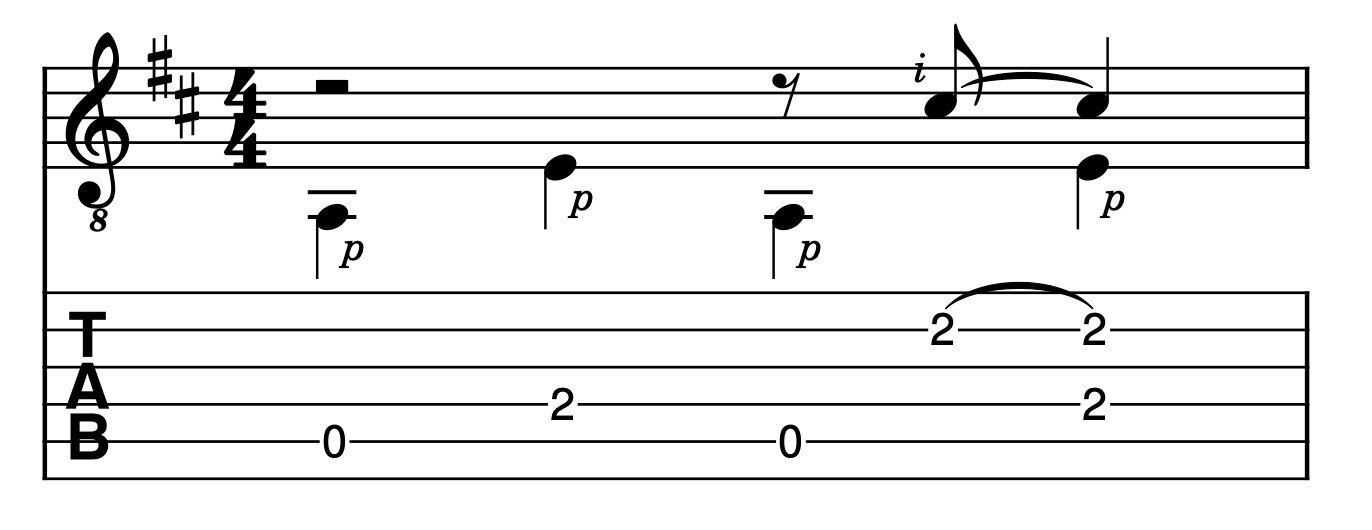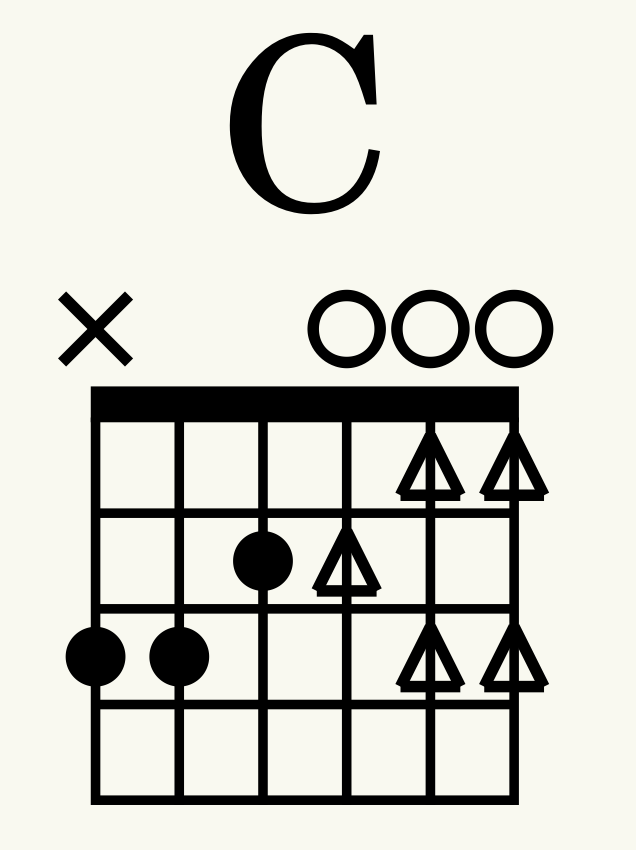The simplest Fingerpicking-Pattern
One motiv – how far we can go with it?
Introduction
THE PATTERN

The right hand therefore stubbornly repeats the pattern:
p – p – p i p
(p – thumb, i – index, m – middle, a – ring finger)
Note: although there is a pause at the beginning of the bar in the score (for readability), if you are repeating the pattern, hold the melody note out and let it play.
Move your other fingers
LET'S CHANGE THAT MELODY!
To begin, arrange the fingers of the right hand on the guitar so that the thumb is responsible for the 3 bass strings and the i, m, fingers each pluck a melody string.
Naturally, this assignment is not written in stone: on more serious pieces, any finger can be placed anywhere, and there are examples of world-famous guitarists who do not use all their fingers – what’s not an example we want to follow blindly, we’ll discuss about it later…
In this case, since you need one finger for the bass, you have three more fingers free for the melody notes, and there is more than an octave of notes available on the three strings. Extend the pattern to a four-beat phrase:

Reminder: although not written out (for readability), hold the melody note until the next melody note is tapped. How long it will actually sound depends on the instrument.

Exploring Advanced Techniques
Changing the chords
Playing one chord is good, but changing to another is even better. In this case, an A major followed by an E major chord. The pattern to follow is to put mainly the root of the chord and its fifth (5th scale note) in the bass (this is the variation I used in the examples above), preferably with the root lower.
Another popular solution is when the fundamental is followed by the octave, then the fifth, then the octave again.

- When linking the above two parts, make sure that the G note of bar 4 is sustained through the bar 5.
- There is no melody note in measure 8 – this is a typical ending form that leads back to the A chord of measure 1.
What about homework?
IT'S YOUR TURN


Real-World Applications
My song One Note for Melody is a showcase for applying those guitar techniques in real-world scenarios. The piece challenges your fingers progressively, check the article for detailed analysis and playing tips:
In case you have problem by properly insert the melody note between the bass notes, then shrink down your right hand to one string, and play there the pattern:
p . p . p i p .
this helps you to train your fingers to do what you want.
You can create your own right hand patterns. For inspiration, check the
In order to place your melody note between the bass notes, check the article about
